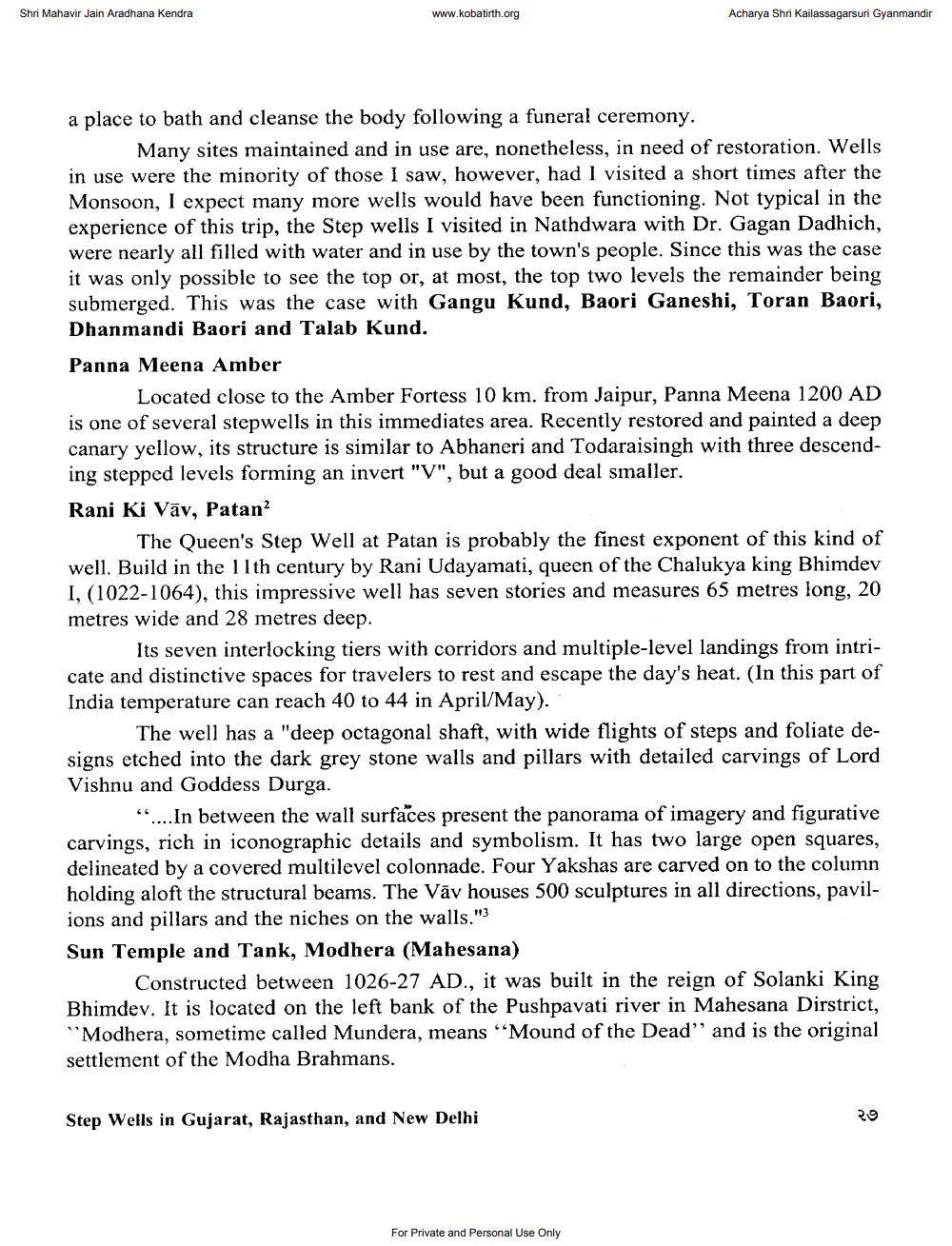________________
Shri Mahavir Jain Aradhana Kendra
www.kobatirth.org
a place to bath and cleanse the body following a funeral ceremony.
Many sites maintained and in use are, nonetheless, in need of restoration. Wells in use were the minority of those I saw, however, had I visited a short times after the Monsoon, I expect many more wells would have been functioning. Not typical in the experience of this trip, the Step wells I visited in Nathdwara with Dr. Gagan Dadhich, were nearly all filled with water and in use by the town's people. Since this was the case it was only possible to see the top or, at most, the top two levels the remainder being submerged. This was the case with Gangu Kund, Baori Ganeshi, Toran Baori, Dhanmandi Baori and Talab Kund.
Acharya Shri Kailassagarsuri Gyanmandir
Panna Meena Amber
Located close to the Amber Fortess 10 km. from Jaipur, Panna Meena 1200 AD is one of several stepwells in this immediates area. Recently restored and painted a deep canary yellow, its structure is similar to Abhaneri and Todaraisingh with three descending stepped levels forming an invert "V", but a good deal smaller.
Rani Ki Väv, Patan
The Queen's Step Well at Patan is probably the finest exponent of this kind of well. Build in the 11th century by Rani Udayamati, queen of the Chalukya king Bhimdev I, (1022-1064), this impressive well has seven stories and measures 65 metres long, 20 metres wide and 28 metres deep.
Its seven interlocking tiers with corridors and multiple-level landings from intricate and distinctive spaces for travelers to rest and escape the day's heat. (In this part of India temperature can reach 40 to 44 in April/May).
The well has a "deep octagonal shaft, with wide flights of steps and foliate designs etched into the dark grey stone walls and pillars with detailed carvings of Lord Vishnu and Goddess Durga.
".... In between the wall surfaces present the panorama of imagery and figurative carvings, rich in iconographic details and symbolism. It has two large open squares, delineated by a covered multilevel colonnade. Four Yakshas are carved on to the column holding aloft the structural beams. The Väv houses 500 sculptures in all directions, pavilions and pillars and the niches on the walls."3
Sun Temple and Tank, Modhera (Mahesana)
Constructed between 1026-27 AD., it was built in the reign of Solanki King Bhimdev. It is located on the left bank of the Pushpavati river in Mahesana Dirstrict, "Modhera, sometime called Mundera, means "Mound of the Dead" and is the original settlement of the Modha Brahmans.
Step Wells in Gujarat, Rajasthan, and New Delhi
For Private and Personal Use Only
૨૭




